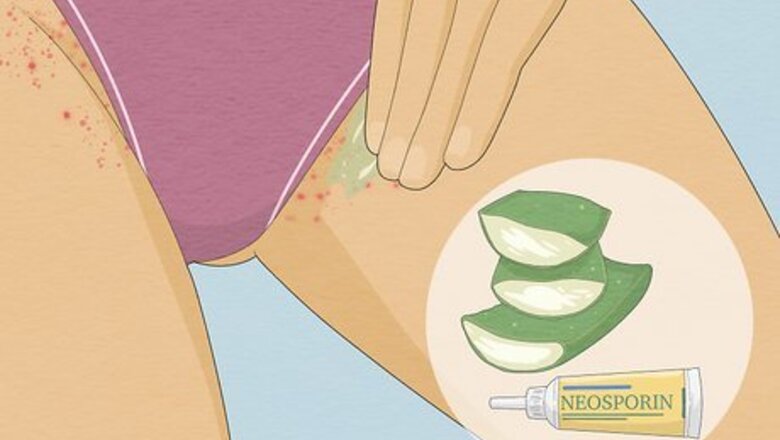
views
Treating Razor Bumps
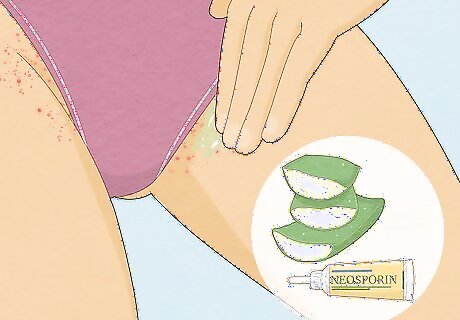
Treat irritation with aloe vera or antibacterial cream. Soothe redness and irritation with aloe vera to leave your skin clear and smooth. If you suspect that you have infected ingrown hairs, try using an antibacterial cream on them up to 4 times each day. Bacitracin, Neosporin, and Polysporin are all possible topical treatments.
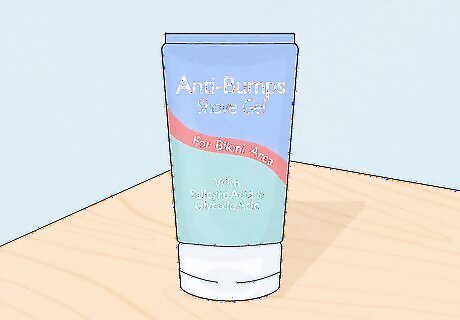
Use a product that's designed to treat razor bumps. Look for something that contains salicylic acid, glycolic acid, witch hazel, aloe, or any combination of these ingredients. Some of these products might come in a roller bottle that's designed to go directly on your skin, while others might require you to put the solution on a cotton ball and dab it on your skin. If you don't know what to buy, call your local waxing salon and ask what they recommend to their clients. You can probably purchase the product there as well, or look around online. Apply the solution to your skin at least once per day, if not more. Aim to do it when you get out of the shower, before your skin has sweat or anything else on it.
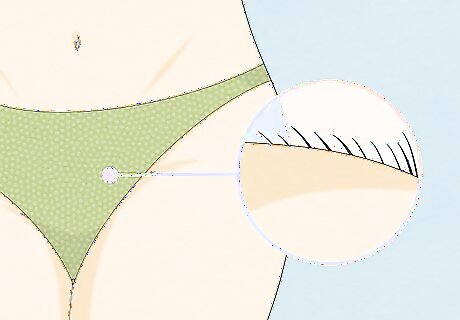
Let the hair grow out a bit before shaving again. Shaving over razor bumps will only irritate or tear them open, leaving them vulnerable to infection (and probably not removing much hair in the process). If you can, let the hair grow for a few days and see if it breaks out of the bumps on its own.
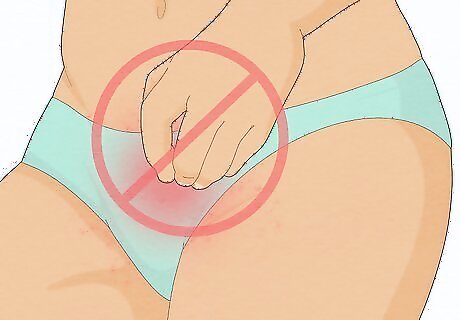
Resist the urge to scratch the area. It might itch, but breaking the bumps with your fingernails can lead to infection and scarring. Try to hold off as much as you can.
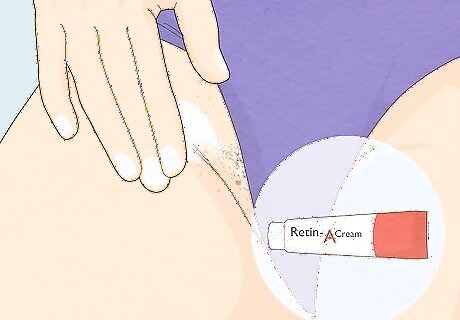
Treat scarring with Retin-A. Retinoids, derived from Vitamin A, can help smooth over skin and reduce the appearance of scars or marks left by razor bumps. You might need to see a doctor for a prescription. Do not use Retin-A if you're pregnant or breastfeeding. It can cause severe birth defects. Areas treated with Retin-A are more susceptible to sunburns. Cover up, or wear SPF 45 sunscreen. Don't use Retin-A on any areas where you plan to wax in the future.— It can make the skin significantly weaker, leading to potential tearing during a waxing session.

See a dermatologist. If your razor bumps persist for several weeks, and you haven't shaved again, consider booking an appointment with a dermatologist.
Preventing Razor Bumps
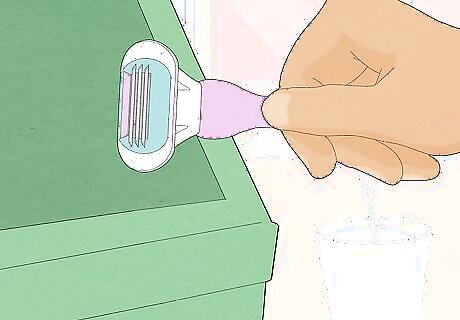
Throw out any dull razors. A dull or rusty razor can keep you from getting a clean shave, whether it's by snagging hairs instead of cutting them, or irritating the skin around the follicle.
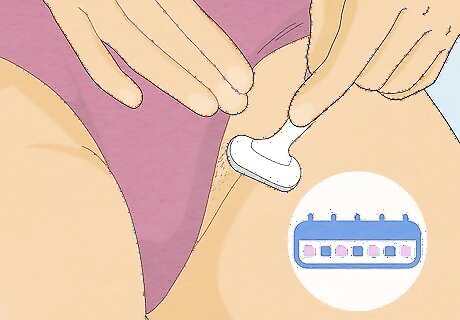
Shave every other day, at the most. Shaving every day can irritate new bumps, so try to wait and only use a razor every second day. If you can, shaving every third day is even better.
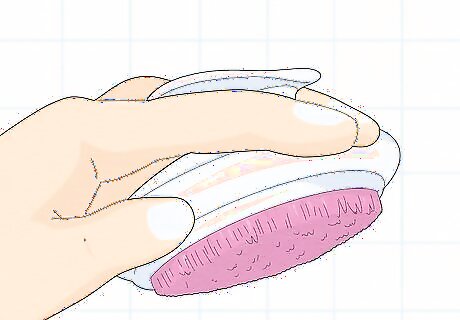
Exfoliate gently. Not enough exfoliation to remove excess layers of skin causes ingrown hairs. Daily exfoliation will prevent razor bumps because the hair will never get a chance to regrow towards the skin and become trapped. Exfoliation will clear off any dead skin cells or other material on your skin, paving the way for a close and clean shave. You can use: chemical exfoliation (coffee scrub, liquids, etc) or physical exfoliation (gloves, loofah, or an ingrown hair prevention brush) or whatever works best for you 2-3 times a week. If you have sensitive skin, then go with the soft and firm bristles. If your skin is sensitive, consider exfoliating on your "off" day from shaving. If your skin handles exfoliation with minimal irritation, try doing it right before you shave.
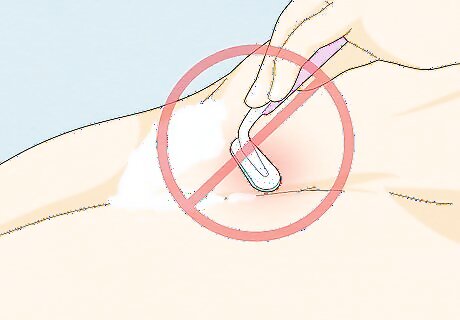
Don't press down on the razor as you're shaving. Applying pressure can make the razor uneven on your skin. Instead, aim to hold it lightly and "glide" it over your bikini area.
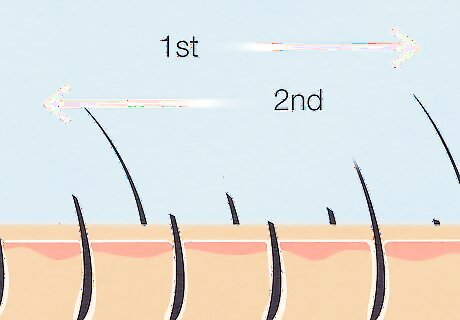
Try not to go over the same area twice. If you missed too much to overlook, make the second pass with the grain, instead of against it. Shaving against the grain means to move the razor in the direction opposite of hair growth. For instance, most people are shaving against the grain when they run a razor from their ankle to their knee. Shaving with the grain creates less irritation, but not as close a shave. Try to use this technique as much as you can if you're going back over an area you've already shaved.
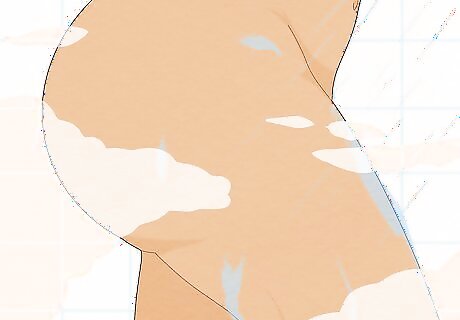
Shave in the shower. The steam from a warm shower serves two purposes: it makes the hair softer, and your skin less prone to nicks and irritation. If you usually shave first, consider reorganizing your shower tasks so that you do it last. Try to give it five minutes before you start shaving. If you don't have time to shower, wet a washcloth with water that's as warm as you can stand, and lay it over the area you're going to shave. Try to leave it for two or three minutes before shaving.
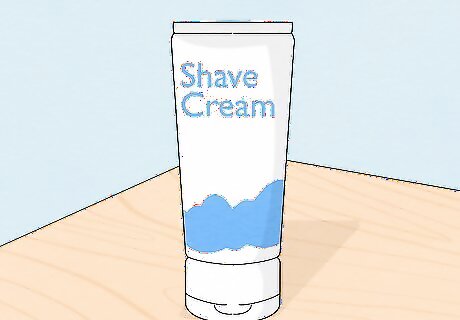
Use shaving cream (or a substitute). Shaving cream can also soften hairs and make them easier to remove (as well as making it easier to track where you've shaved and where you haven't). Find a cream that includes aloe or other moisturizing compounds. If you're in a pinch and have no shaving cream, use hair conditioner instead. It's better than nothing!
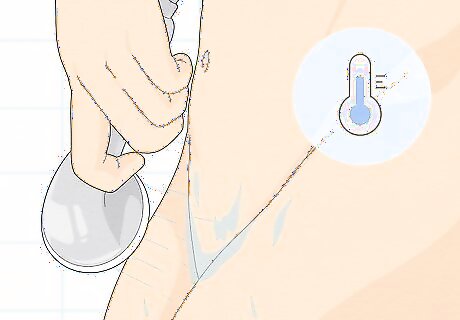
Rinse off with cold water. Ending your shower with a blast of cold water, or using a cold washcloth on the area, will cause your pores to temporarily contract, leaving them less vulnerable to irritants and infection. Contrary to the popular myth, cold water doesn't "close" your pores. The cold temperatures may cause pores to contract slightly, but the effect is only temporary and minimal. There's no harm in rinsing with cold water, but if you find this step notably unpleasant, you should be able to skip it without much consequence.
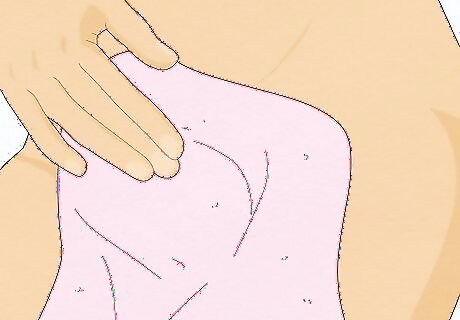
Pat the area dry. Don't rub yourself dry harshly with a towel. Instead, dry your bikini area in small taps, saving your skin a load of irritation.
Long-Term Prevention
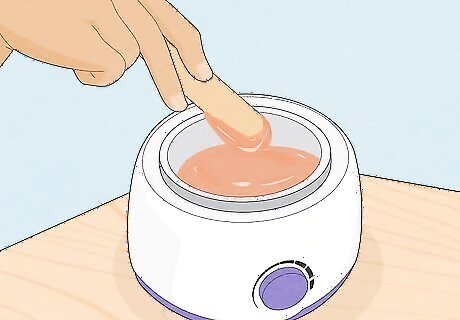
Consider waxing for long-term prevention. In the short-term, waxing typically causes more ingrown hairs than shaving does, so this might seem like a less than ideal solution. However, waxing consistently over long periods of time can slow hair growth, so you'll need to wax less often and will experience fewer ingrown hairs in the long-run. If you do decide to wax, just make sure you stick with it consistently to see the results you want! If you do decide to wax, aim to make an appointment every six to eight weeks in the beginning. You might be able to go for longer stretches without waxing later. Choose a reputable waxing salon. Ask around, or search reviews online. Know what to expect. Your skin will probably be a little red and irritated when you leave, but you shouldn't have open cuts or dark, widespread bruises. Additionally, if you notice that your skin is infected a day or two after your appointment, start applying an antibiotic cream and notify the salon immediately.
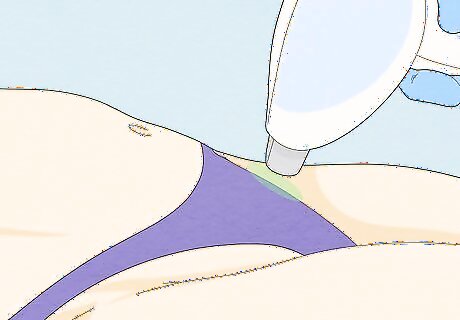
Consider laser hair removal. Contrary to popular belief, laser hair removal won't completely remove your hair forever. However, it will significantly reduce growth. Be aware that laser hair removal works best on dark hair and light skin. If your skin and your hair are too close to the same color (whether it's too light or too dark), you might not be a good candidate for treatment. Laser hair removal is expensive, and you'll need at least four to six treatments. Price it out and watch for promotions.

















Comments
0 comment